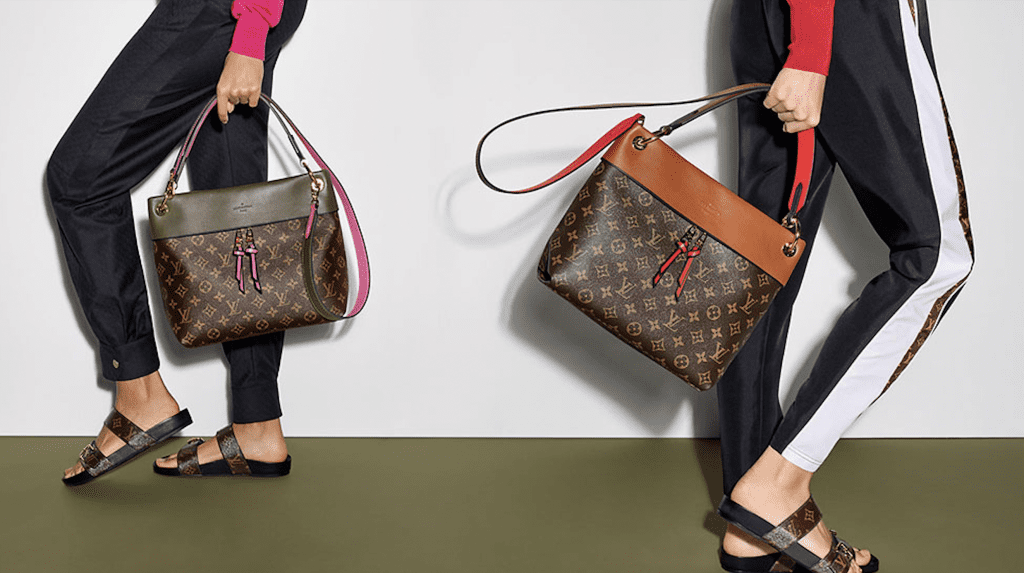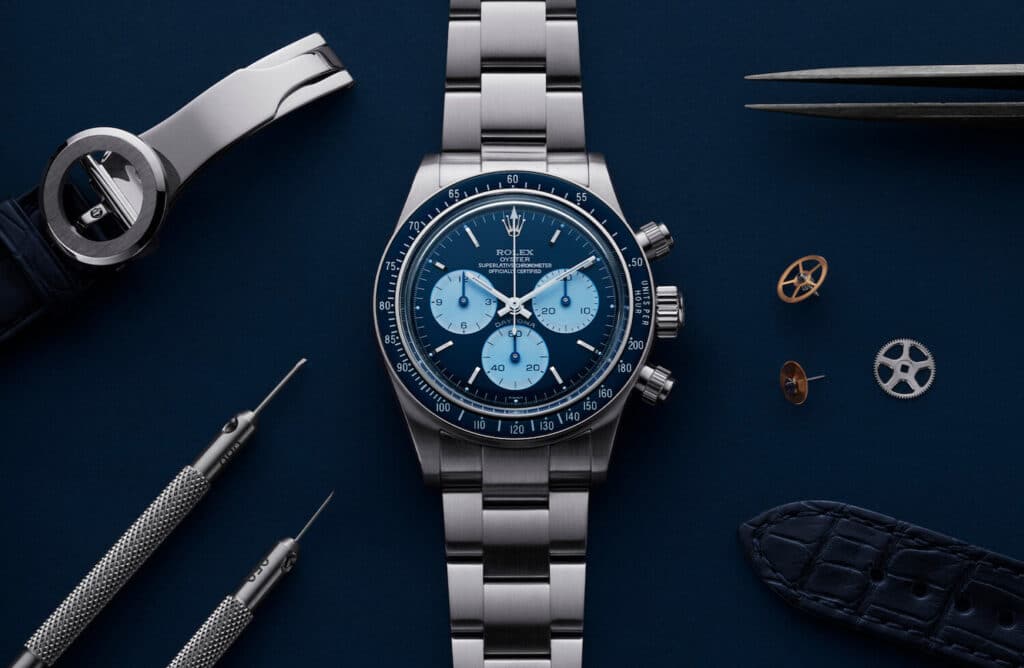The outlook for standalone brands in the fashion and luxury sphere is becoming increasingly “tricky,” Reuters reported recently, noting that “cash rich conglomerates like LVMH Moët Hennessy Louis Vuitton and Kering are drowning out competitors with [their over-sized] spending on social media marketing and their hiring of star designers.” At the same time, luxury groups are well-position “to invest in markets like mainland China,” particularly compared to their independently-owned counterparts, something that is of increased importance in light of economic and cultural storms, such as the financial blows that have come with months of mass protests in Hong Kong.
The upper-most echelon of the fashion industry is firmly dominated by an increasingly small handful of mighty entities that have amassed collections of brands, which they have turned into house-hold names by way of eye-poppingly expensive traditional marketing efforts (complete with strong luxury-centric messaging) and the help of no small number of globally-recognized celebrities. Their logos adorn the bags carried by consumers in cities across the world; their footwear, eyewear, and apparel can be spotted on teens in top-tier cities in China and on moms in New York City.
The Luxury Status Quo
This is the status quo for luxury goods, but it has not always been this way. In fact, it was not all that long ago that the high fashion/luxury sector was composed almost exclusively of a smattering of family-run enterprises, many of which focused largely on their native markets and their core categories of competency. Until the 1980s, for instance, the Florence-headquartered leather goods brand that Guccio Gucci founded in 1921 remained in the hands of the Gucci family. Fellow Italian house Fendi was similarly kept in close family control – specifically, in the hands of Paola, Anna, Franca, Carla and Alda Fendi, the five second-generation sisters, who inherited the Roman ready-to-wear and fur business in 1954 upon the death of their father – until 2000.
The start of the new millennium saw LVMH and Prada –the latter of which now owns Miu Miu, Church’s, and Car Shoe – form something of an unusual alliance and acquire a 51 percent stake in the company. Given that each of the Fendi sisters held a 20 percent stake in the business, four out of the five had to back the sale, and they did. The list goes on in a similar manner for nearly all of the most esteemed luxury brands, whose corporate histories come with comparable tales of acquisitions by the likes of industry conglomerates, such as LVMH and Kering, which have spent billions of dollars over the past few decades building up the bulk of their businesses, with a marked wave in the 1990s and steady acquisition efforts throughout the early-to-mid-2000s.
The result of such efforts by luxury conglomerate builders – such as LVMH’s Bernard Arnault, Kering’s François-Henri Pinault (and his father François Pinault before him), and Richemont’s Johann Rupert – to boost their prowess by building up sizable portfolios of coveted consumer-facing brands, has been striking: the names at the forefront of the development of the luxury sector have essentially become the industry.
As evidenced by recent events and rumblings, from LVMH’s impending $16 billion-plus acquisition of Tiffany & Co. to Gucci-owner Kering’s reported interest in nabbing Moncler, their quests for growth (and the consolidation that comes with it) do not appear to be abating. In fact, there are “heightened expectations of more deal-making in a luxury industry” to come in the not too distant future, per Reuters.
Increased Consolidation
The path to increased luxury-level amalgamation makes sense for the likes of LVMH and co., as the reality behind the steady number of mergers and alliances, particularly in recent years – whether it be LVMH formally consolidating Dior into its group, and acquiring luggage-maker Rimowa in 2016 and a larger piece of jewelry company Repose earlier this year, or Richemont’s swallowing up of e-retail giant Yoox Net-a-Porter and Italian jeweler Buccellati – is that “consolidation is central to success [of the luxury sector],” according to the Financial Times’ Anna Gross.
Such large-scale banding together “fortifies” big brands (even if the potential cost savings to be garnered from luxury mergers are not necessarily as sizable as those that abound in more down-market industries), particularly in light of investor fears of a looming global recession, says Gross. And this is something that “has been reflected in stock prices.” LVMH is a good example: The Wall Street Journal revealed last month that shares in the Paris-based group – which owns 75 different brands ranging from fashion houses like Louis Vuitton, Dior, Givenchy, and Fendi to spirits companies, such as Veuve Clicquot and Moet and holds the title of the largest luxury goods group in the world – “are worth more than Europe’s biggest auto maker, Volkswagen AG, and [its] biggest bank, HSBC Holdings.” In October, alone, LVMH’s share price grew by more than 5 percent, bringing its market capitalization to $222 billion for the first time ever, and “making it almost as valuable as Europe’s biggest oil producer, Royal Dutch Shell PLC.”
With such steady growth and future gains in mind, the general consensus (at least from a markets point of view) is that it is better to be a big guy, and that “brands can do better with a conglomerate” behind them, as the Economist puts it. This line of thinking is certainly bolstered by the self-perpetuating cycle born from the continued moves towards consolidation, which pit single-brand entities against bona fide behemoths, something that has prompted no shortage of “smaller players to seek the security of bigger groups.”
The FT points to Versace’s late 2018 sale to Capri Holdings (nee Michael Kors) for $2 billion, a seeming testament to the fact that it is becoming increasingly difficult to exist and grow as an independently-held brand in the corporate fashion landscape. Capri had previously welcomed Jimmy Choo into its expanding arsenal, while American rival group Tapestry brought Coach, Kate Spade, and Stuart Weitzman under a single roof.
These moves, paired with the ongoing endeavors of European giants, mean that “performance polarization in the luxury sector remains high,” Rogerio Fujimori, an analyst at RBC Capital Markets, told the FT in November. “Bigger luxury groups [are] grabbing a bigger slice of the pie at the expense of many smaller players.”
Others agree. Analysts from UBS, for example, told the paper that “the negative implications [of such consolidation] for the rest of the sector seem under-appreciated.”
The Luxury Conglomerate Going Forward
Looking beyond the individual deals of late, and the healthy skepticism that should be exercised when it comes to the large-scale consolidation of an industry by a few key forces, the question becomes: how long can this go on for? As the Economist aptly asserts, “The timeless brands that conglomerates crave by definition need a long history, and these are relatively few.” Chanel – whose annual sales (a whopping $11.12 billion in revenue in 2018) make it something of a mini conglomerate in its own right – comes to mind, and if incessant reports are to be believed, LVMH has, at different times, been angling for an acquisition. (Arnault explicitly shot down acquisition-specific speculation, calling it “fake news” at the group’s annual shareholder meeting in April 2018. Bruno Pavlovsky, Chanel’s president of fashion, similarly has denied rumors of this nature).
Speaking to the brand’s consistent stance in favor of remaining independent, Philippe Blondiaux, the Chief Financial Officer of Chanel chimed in on the topic, as well. He said in June that Chanel – which has long been held by the Wertheimer family, with French billionaire brothers Alain and Gerard currently in control – “needs to remain independent, in order to have the freedom to make choices that go against the grain, such as no longer using exotic animal skins, or by harmonizing prices.”
Rolex is another frequently-cited target. Not only does the Swiss watchmaker have 114-years of high-end history to go on, it has a hold on something like 22.2 percent of the global luxury watch market, per Morgan Stanley, and an estimated $11.6 billion in annual retail sales. But … controlled by the private Hans Wilsdorf Foundation, the company similarly has a dedication to “preserving its [independent] status fiercely.” Finally, Hermès – which is publicly traded on Euronext Paris – is an obvious pick, although an unlikely one, as more than 70 percent of the company is still family-owned and bolstered by the formation of a holding company by the Puech, Dumas and Guerrand families in 2010 in furtherance of an “irrevocable” commitment to maintain control.
That is not to say, however, that a company’s desires to remain in family hands have always proven persuasive to the luxury conglomerate builders. The Hermès holding company was created in response to an aggressive – albeit ultimately unsuccessful – takeover effort by LVMH, after all.














